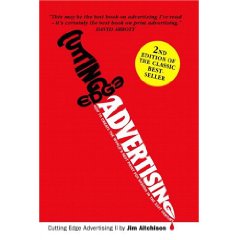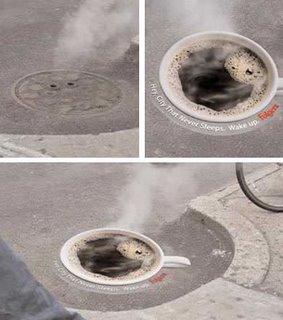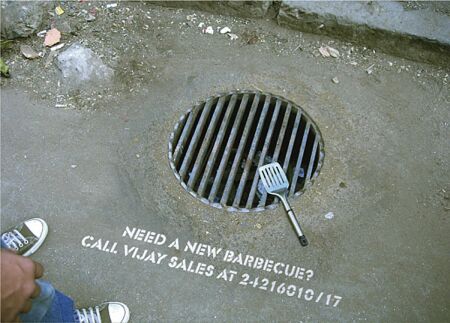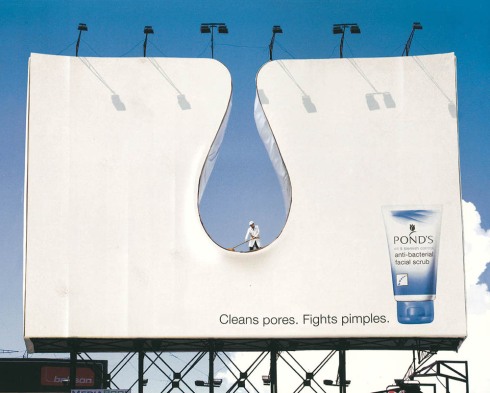You are currently browsing the tag archive for the ‘Advertising’ tag.
Book recommendation everyone!

Cutting Edge Advertising: how to create the world’s best print for brands in the 21st century by Jim Aitchison
Chapter 9 is my favourite part of this book. Well, mostly because it’s talking about global advertising which is my project’s topic.
When talking to a global consumer, it is indeed very important to recognize the differences in their culture as well as their needs and values (this is what I’ve been talking about in my past blog posts, about cultural sensitivity being the key to a successful advertising campaign) but sometimes it is also important to find their similarities. The author, Aitchison stated that by seeking similarities in their global target audiences, marketers can liberate themselves from the lowest common denominator in advertising (p. 344). However, all this really would depend on the brand and the product being advertise itself. If the product is universal, universal idea will work. For example, brand like Levi’s which is selling an all American lifestyle probably should not change their advertising campaign depending on the target audience because once they do so, they would no longer be an all American brand. Another important factor is the consumer/target audience. One example from the book is Levi’s core target audience, male and female aged between 15 to 19 years old all around the world. They may be from different culture with completely different values but they are very similar in the sense that they worry about same things, such as growing up, relationship with their parents and school. So as long as you find a key message that touches those areas, global advertising will become possible. In other words, while the execution of the ad itself must be culturally specific (language, talents, communication methods), the key message does not have to be different for different culture. Well, as I said earlier this will also depend on the product being advertise. Bottom line, there are many different factors to consider while planning a global advertising campaign and this chapter explains it very clearly and also in an interesting way.
After stressing over nothing these past few weeks, rethinking the direction of my project, I think I finally found a solution or a problem to be exact.
Can an advertising campaign that is sensitive to different ethnic group be the solution to racism?: the intention of my project is to examine how cultural sensitivity has become the key to a successful advertising campaign and applying this research to create an anti-racism campaign targeting international students, in specific Japanese and Indonesian students in RMIT.
This way, it doesn’t just make it easier for me to later evaluate my project (through focus group) but also making it more interesting in the sense that I would have to come up with culturally unique executions by using narrow media platforms and below the line promotions.
**Three key terms (these three terms are integrated with one another):
Below the line Advertising: Above the line advertising refers to a promotion through traditional mediums such as TV, radio, magazine and newspaper. On the other hand, below the line advertising uses any mediums that do not include traditional mediums listed above.
Ambient Media: It is the name given to a new breed of out-of-home products and services determined by some as Non-Traditional or Alternative Media. Ambient media advertising can be used in conjunction with mainstream traditional media, or used equally effectively as a stand-alone activity. The key to a successful ambient media campaign is to choose the best media format available and combined with effective message (taken from wikipedia).
Guerrilla Marketing: An unconventional system of promotions that relies on time, energy and imagination rather than a big marketing budget. Typically, guerrilla marketing tactics are unexpected and unconventional; consumers are targeted in unexpected places, which can make the idea that’s being marketed memorable, generate buzz, and even spread virally (taken from wikipedia).
**Examples of the above:







ps. if any of you are interested in finding out more about this, try and find a book by Gavin Lucas and Michael Dorrian titled ‘Guerrilla Advertising’.
I was talking to my friend from Indonesia who works as an art director in an advertising post production company. So he basically does editing of TVC as well as other medium. He was kind enough to share his portfolio with me and telling me about what kind of ads are popular in Indonesia at the moment. Obviously, the concepts and executions would change depending on the target market but it seems like a lot of ads, especially TVC, are very dramatized and exaggerated. From clips I posted here, it’s quite evident that most concepts are mainly playing with people’s emotions, in an ambiguous way. Indonesia, in my opinion, is in between Japan and Australia, in between high context and low context communication. The ads are not necessarily data oriented and informative but it is straightforward and the viewers could tell what the product is. It doesn’t rely on the product itself or its characteristics but it rely on the emotions produced as a result of using or seeing the product and in most cases these emotions are a little exaggerated. So I guess, I picked the right three countries since they all fall into different category in term of their communication level – low, medium, high context communication culture.
Since I’ve been talking about mistake made in cross-cultural advertising, in this post, I will provide few examples of errors made by multinational corporations when advertising their brand abroad. Should be pretty interesting to read.
– When Kentucky Fried Chicken opened its store in China, they’re famous slogan of “finger lickin’ good” was translated into “eat your fingers off”
– In Italy, the name “Schweppes Tonic Water” was translated into “Schweppes Toilet Water”
– People in China took Pepsi’s slogan “Pepsi Brings you Back to Life” more literally than they intended, which translated into “Pepsi Brings Your Ancestors Back from the Grave”
– When General Motors introduced the Chevy Nova in Spain, “nova” apparently meant “it won’t go” which resulted in the low sales outcome
– Ford made a similar mistake when they launched Pinto in Brazil. “Pinto” is Brazilian slang for “tiny male genitals”
– In an advertisement for a pen by Parker Pen a pen, the tagline was supposed to say “It won’t leak in your pocket and embarrass you.” However, the company mistakenly thought the Spanish word “embarazar” meant embarrass, so instead the ads said “It won’t leak in your pocket and make you pregnant.”
– When Braniff translated a slogan touting its upholstery, “Fly in Leather,” it came out in Spanish as “Fly Naked”
– Coors put its slogan, “Turn It Loose,” into Spanish, where it was read as “Suffer From Diarrhea”
– An American T-shirt maker in Miami printed shirts for the Spanish market which promoted the Pope’s visit Instead of “I Saw the Pope” (el Papa), the shirts read “I Saw the Potato” (la papa)
These examples were taken from ‘Some Humorous Cross-Cultural Advertising Gaffes‘. If you want to see more, just click this link and it will bring you directly to the website.
Have you all seen this? While I was searching for ads from Indonesia, I found this pretty interesting videos about Barack Obama, President of the United States, look a like in Indonesia.
